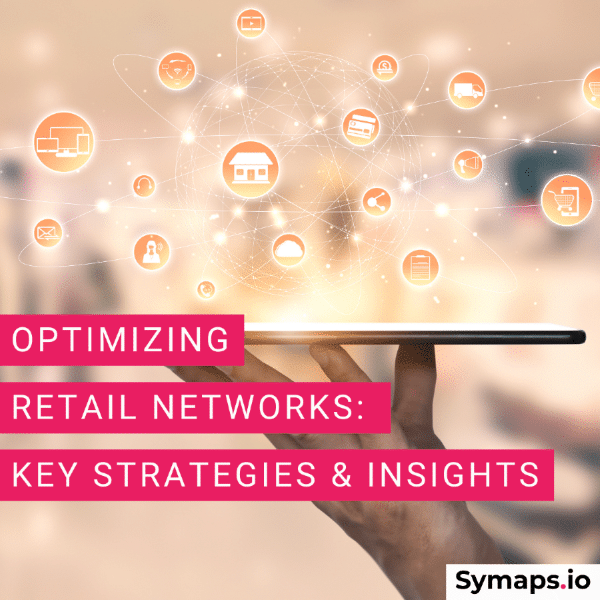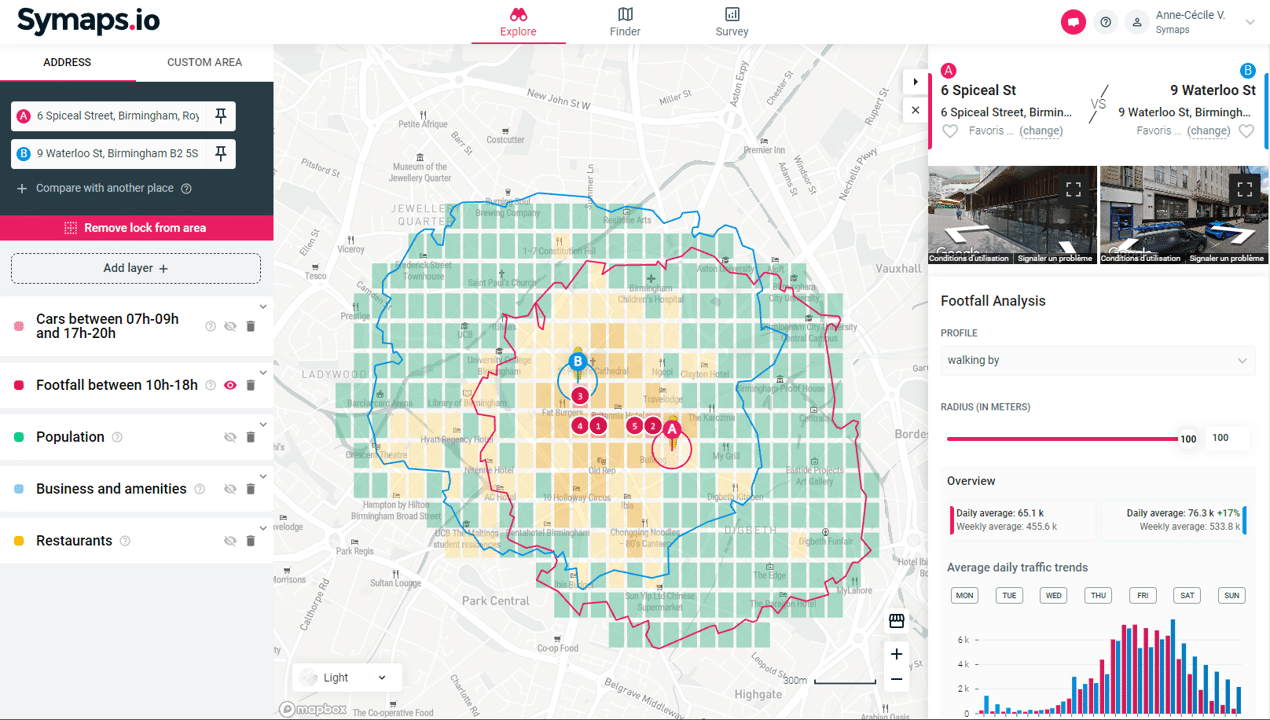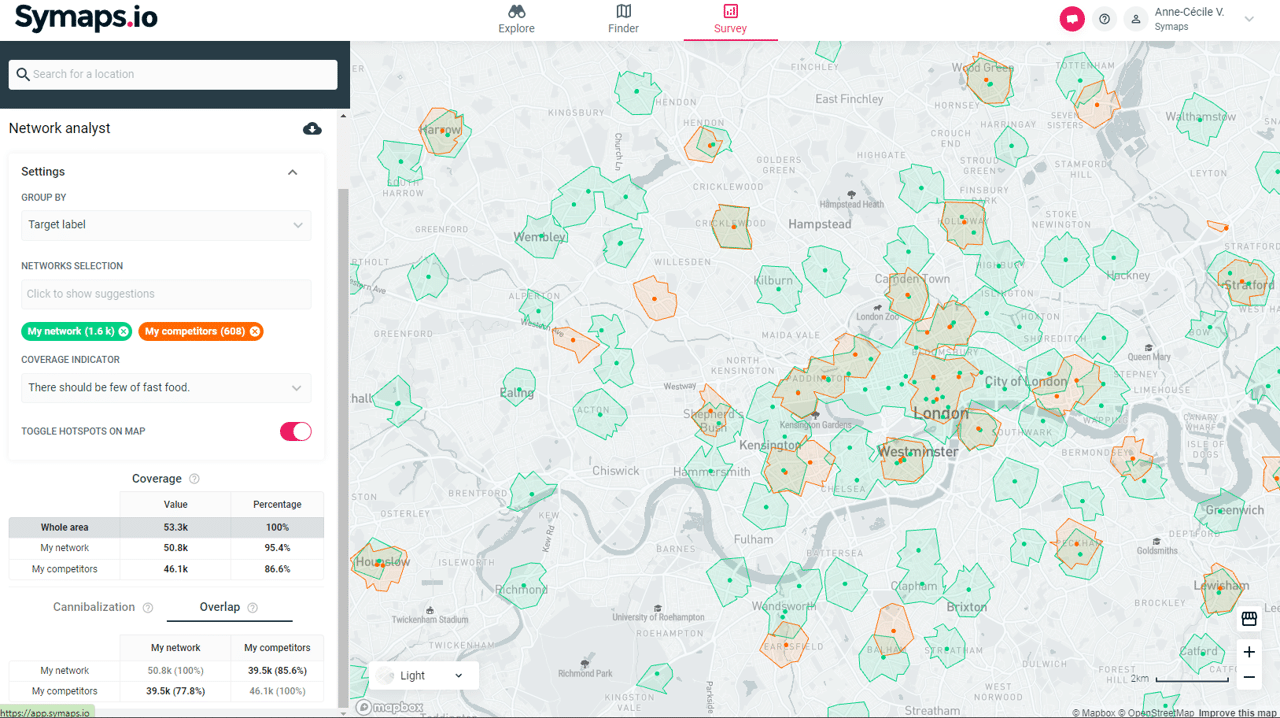Optimizing Retail Networks: Key Strategies & Insights
The retail landscape is constantly changing, and businesses must adapt to stay competitive.
Optimizing your retail network is one of the critical aspects of these adaptations. With the rise of the digital era and changing consumer behaviour, it’s more important than ever to develop a strong and efficient retail network.
This article will explore the latest trends in retail, how to analyze your network data, and successful strategies for optimizing your retail network.

Three Retail Network Trends You Should Consider
The Power of Omnichannel: Delivering Seamless Shopping Experiences
Consumers expect seamless shopping experiences across all channels. Integrating online and offline touchpoints will help retailers create a cohesive customer journey that drives loyalty and repeat business.
For instance, customers can use the Adidas app to request products they want to try on in-store, and store associates will bring the items directly to them. The app also enables mobile checkout for a seamless shopping experience combining digital and physical retail experiences.
Embracing Personalization and Localisation for Enhanced Customer Satisfaction
To better cater to diverse customer preferences, retailers should focus on personalizing products, services, and marketing efforts. Localisation strategies, including tailoring store formats and assortments to specific regions, can also help retailers resonate with local markets. As an example, Starbucks has effectively adopted localisation strategies by designing stores that reflect the local culture and offering region-specific menu items.
Expanding Delivery and Pickup Options
With the growth of e-commerce, offering convenient delivery and pickup options has become essential for retailers. Invest in improving your logistics and supply chain to provide faster and more efficient fulfillment options. In 2021, Carrefour expanded its partnership with Uber Eats, offering a 30-minute delivery service to customers in France, Belgium, Italy, and Spain. This collaboration provides shoppers with greater convenience by delivering a wide range of products, including groceries, personal care items, and household essentials, directly to their doorsteps.

Leveraging Retail Network Data for Strategic Decision Making
Monitor your Key performance indicators (KPIs) to Measure Success
Establishing KPIs is crucial for measuring the success of your retail network and ensuring continuous improvement. Sales per square foot, foot traffic, and customer satisfaction are just a few examples of KPIs that can help you gauge the effectiveness of your retail strategy. Regularly monitoring these metrics will not only help you identify areas for improvement but also enable you to track progress over time.
Understand Shopping Behaviors, Customer Preferences and Trends
Utilize customer data and analytics to gain insights into shopping behaviors, preferences, and trends. This information can inform your store locations, product assortments, and marketing efforts.

Identifying areas for improvement and growth
Analyzing your retail network data is key to identifying underperforming stores and potential growth opportunities. By examining factors such as demographics, competition, and market potential, you can make data-driven decisions to invest in expansion or store closures. This approach allows you to focus on more profitable locations and allocate resources effectively, ultimately driving growth and success for your retail business.

Orientations for a Successful Retail Network
Exploring Store Format Innovation
In order to meet the diverse needs and preferences of customers, consider experimenting with various store formats. Smaller stores can cater to urban markets with limited space, pop-up shops can generate buzz around limited-time offerings, and experiential stores can engage customers through interactive displays and immersive experiences. For example, Samsung’s flagship store in New York, Samsung 837, showcases innovative technology and interactive experiences, allowing customers to engage with the brand in a unique and memorable way.
Leveraging Location Intelligence for Strategic Store Placement
Utilize location-based data and analytics to identify optimal store locations, taking into account factors such as demographics, customer behavior, and nearby competitors. By strategically opening, closing, or relocating stores based on these insights, you can optimize your retail network and improve overall performance. For instance, Yo!, a brand of sushi restaurants in the UK, uses Symaps location analytics to identify prime locations, considering factors like foot traffic, nearby businesses, and local demographics, ensuring that each restaurant is positioned for maximum success.
Integrating online and offline channels to Create a Seamless and Integrated Shopping Experience
In today’s retail environment, it’s essential to create a seamless and integrated shopping experience by connecting your physical stores and e-commerce platform. This includes inventory visibility, buy online pick up in-store (BOPIS) options, and consistent pricing and promotions across channels.
5. Geomarketing tools
There are a variety of geomarketing tools available, including:
– Geolocation tools
Tools that enable businesses to target customers based on their location, such as GPS and Wi-Fi.
– Mapping and visualization tools
Tools that allow businesses to visualize and analyze geographic data, such as heat maps and demographic maps.
– Data analysis tools
Tools that enable businesses to analyze and interpret geodata, such as marketing analytics software and business intelligence tools.
Conclusion
Retail network optimization is a continuous process that requires businesses to stay agile and adapt to the ever-changing retail landscape. By keeping an eye on emerging trends, leveraging data for decision-making, and implementing successful strategies, retailers can maintain a competitive edge and drive long-term success in their retail networks.
Is your network perfectly optimised?
- Let’s talk about it 30 minutes by phone.
- Our team will help you analyse your situation on the basis of a set of objective location criteria
- You get strategic recommendations with the 3 most important areas for improvement.
Share post

